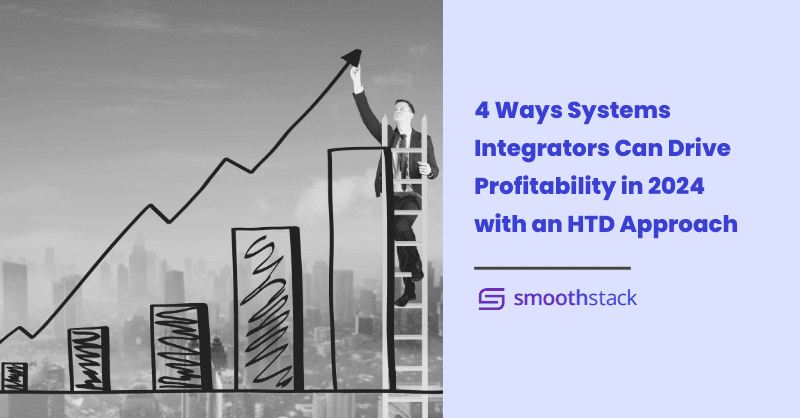4 Ways Systems Integrators Can Drive Profitability in 2024 with a Hire-Train-Deploy Approach

By all accounts, the most consistent business prediction for 2024 is continued economic uncertainty. Organizations must find a way to balance the difficult economic environment with the need to embrace technology. For many private sector companies, that often means pausing any non-critical projects and bootstrapping a budget. For many public sector organizations, it means forging ahead with modernization efforts.
For systems integrators (SIs), this means chasing profitability in smart ways that create a longer runway for growth in the future. Below are four ways that building out tech teams and meeting client demand via the Hire-Train-Deploy (HTD) approach allows SIs to drive profitability in 2024.
1. Hiring predictability and efficiency.
SIs are continuously vying for business, going after commercial or federal contracts that require them to have a specific bench of talent with certain expertise. Once a deal is won, delivery is the top priority, and getting the right people in place is crucial to the success of any engagement.
Why should SIs have HTD in their tool kits when strategizing and building teams? Competition is fierce for talent – bidding wars, ghosting, hiring delays, etc. By partnering and planning ahead with an HTD partner, SIs can custom build the skill sets they’ll need in advance, determine how many resources they’ll need, and have their resources ready to go on the specific date needed – and, most importantly, contributing to the team on day one.
2. Talent stability.
We all know by now that attrition is expensive, not only because of the financial implications of replacing talent, but also in terms of lost productivity, workload pressures, cultural impacts, and more. This is a huge challenge for SIs: according to Zippia, the average tenure for a systems integrator is just 1-2 years.
Smoothstack developers have a 98% retention rate, and 90% of our engineers are successfully converted to full-time employees. With intense, specific training, our resources are more connected to our clients’ business, and are fully supported by our team to ensure they are engaged and thriving.
3. Pivot resources between teams.
For many of the SIs that Smootstack engages with, business was not consistent across their public and private sector teams in 2023. SIs had to let go of consultants on the commercial side this year, or at the very least slow hiring.
For these SIs, they have a unique opportunity to pivot cleared, federal IT resources to private sector projects as needed. The HTD model keeps talent costs low, and thinking strategically about optimizing these resources to meet exact needs drives further ROI.
4. Grow your technology partnerships.
Creating strong partnerships and increasing status with technology vendors is a massive priority for SIs. To do this, they must grow the number of certifications held, a key factor in qualifying for higher-level contracts.
Smoothstack’s Databricks partnership and involvement in initiatives like Rise Up with ServiceNow, for example, give SIs access to custom-trained Databricks consultant or ServiceNow consultant talent according to their client projects. And, unlike most staffing firms, Smoothstack allows SIs to hold the certifications for IT resources while they’re working on projects.
Systems integrators must focus on increasing their business agility and flexibility in 2024, to account for continued uncertainty in the market. How they build out their teams to support these efforts is critically important. An HTD or RTD company approach allows them to drive profitability by avoiding the challenging IT labor market and creating a predictable, sustainable niche technical bench.
Let’s Build Your Team
Connect with the Smoothstack team to learn how to close your digital skills gap with a custom-trained team.